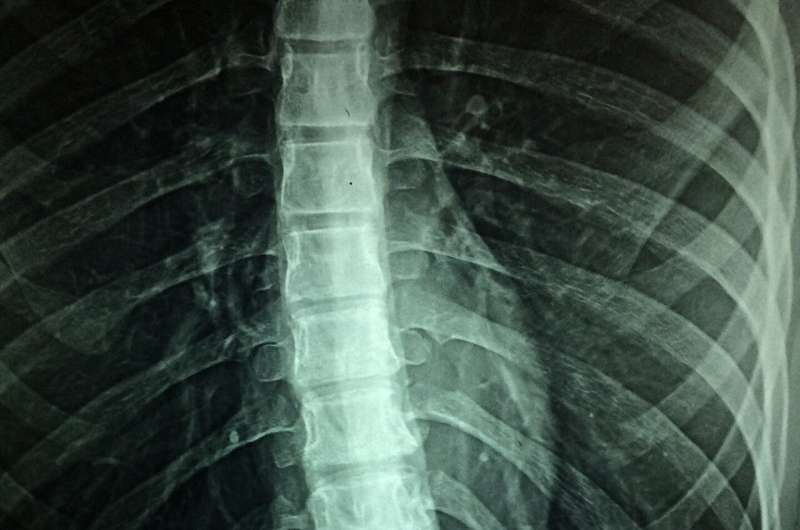This article has been reviewed according to Science X's editorial process and policies. Editors have highlighted the following attributes while ensuring the content's credibility:
fact-checked
trusted source
proofread
New study may advance use of spinal cord stimulation for chemotherapy-related pain and cancer treatment

Researchers at Johns Hopkins University School of Medicine say they have evidence from a new study in rats that spinal cord stimulation (SCS) may be useful in reducing chronic pain in people undergoing active treatment with a common anti-cancer drug.
The study found that the use of SCS measurably reduced pain response in rats that were implanted with human lung cancer tissue—without compromising effectiveness of treatment with paclitaxel, a drug used to treat a variety of cancers.
The study, published April 11 in Neuromodulation: Technology at the Neural Interface, advances strategies to prevent and treat neuropathy that results from paclitaxel and other chemotherapy drugs, according to the researchers.
SCS is often used as a last resort for pain management for cancer patients who do not respond to any other forms of treatment, says Eellan Sivanesan, M.D., assistant professor of anesthesiology and critical care medicine at the Johns Hopkins University School of Medicine. The new study, he says, suggests the value of better use of SCS in combination with drugs that trigger neuropathic pain, and later when patients are in remission. There is currently no effective preventative treatment and no reliable treatment for established, long-term neuropathy.
"Quality of life after treatment is a rising focus in cancer treatment and debilitating pain is often an issue," Sivanesan says.
SCS works by implanting a small generator under the skin that sends low levels of electricity through flat tiny wires, or electrodes threaded directly in between the spinal cord and the vertebrae, usually near the buttocks or abdomen. Patients can send electrical impulses using a remote control when they feel pain.
In the new study, researchers worked with adult male rats that received transplants of lab-cultured human non-small cell lung cancer. Rats were divided into six groups: no tumor or treatment, tumor with no treatment, tumor with paclitaxel treatment only, inactive SCS with paclitaxel and tumor, active SCS with paclitaxel and tumor, and paclitaxel with no tumor or SCS.
Baseline pain behaviors were assessed before any tumor transplantation or treatment, utilizing standard tests that measure response to stimuli such as cold or touch. These behaviors were monitored weekly along with tumor growth, using a standard means of detecting tumor cells that was engineered to carry chemicals that "light up" under special imaging methods.
During the study period, researchers found that the groups of rats with spinal cord stimulation showed signs of decreased pain as measured by the length of time it took for rats to react to stimuli. The rats with tumors showed sensitivity to cold stimuli regardless of treatment plan, but the rats with SCS exhibited significantly longer time to respond than those without.
This indicates that rats with SCS displayed a higher pain tolerance than those without SCS, suggesting that they were experiencing less neuropathic pain. In addition, researchers found that SCS improved the antitumor efficacy of paclitaxel, which provides further evidence of SCS as an important companion to chemotherapy. This major finding may support the wider use of SCS for cancer and chemotherapy pain.
"Despite the severe side effects, paclitaxel remains one of the most effective drugs for treating a wide range of cancers. However, the neuropathy can become so severe in some patients that treatment must be stopped to preserve quality of life," says Sivanesan. "This study showed that addition of spinal cord stimulation not only helps prevent pain, but also makes the drug more effective. This could be a game changer for these patients."
The investigators caution that further research in is needed before SCS can be widely implemented as a companion for pain management and prevention for patients receiving chemotherapy.
More information: Eellan Sivanesan et al, Spinal Cord Stimulation Increases Chemoefficacy and Prevents Paclitaxel-Induced Pain via CX3CL1, Neuromodulation: Technology at the Neural Interface (2023). DOI: 10.1016/j.neurom.2023.03.006















